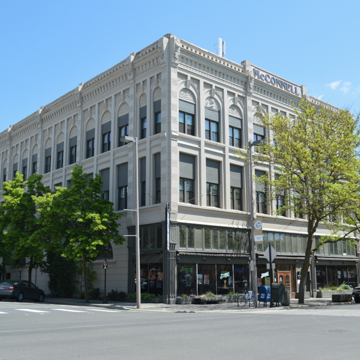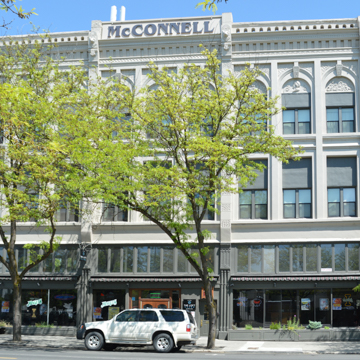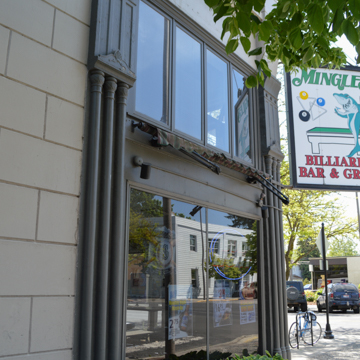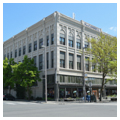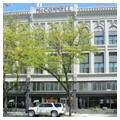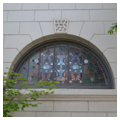You are here
McConnell Building
In 1891, at the peak of downtown Moscow’s development, two pioneer entrepreneurs, William McConnell and his partner, James McGuire, constructed the McConnell-McGuire Building, a three-story department store on the southeast corner of First and Main Streets. The handsome, Italianate, cast-stone building was considered progressive because it introduced stylistic innovations that were affordably achieved through use of cast iron for its pilasters, pediment, and ornamentation. Denver architects W.J. Lewis and M.D. Ogilbee designed the building during their brief tenure in Moscow. The Moscow Mirror heralded their design as a “monument to enterprise.” The building’s prolific use of cast iron, produced locally by Moscow Iron Works, represents the most comprehensive application of the material in the state of Idaho.
Changes to the McConnell–McGuire building parallel both local and national economic trends. The department store was short-lived, closing during the 1893 economic panic. Simultaneously, McConnell was elected as Idaho’s governor. In 1905, the building’s second floor was converted as office space for the U.S. district court. Between 1912 and 1918, Boston entrepreneur Nat Williamson revived its use as a department store. His renovation featured an elevator installation and eye-catching electric promotional sign, but the economic stresses from World War I led, again, to the store’s closure. Significant changes occurred in 1928, when Portland investors converted the upper stories to forty-three apartments.
Beginning in the 1950s, inappropriate alterations to the McConnell building’s storefronts paralleled interventions made to historic buildings in struggling downtowns throughout the United States, by owners who hoped to reverse downward economic trends through modernization efforts. In 1983, developer Ronald Wells purchased the McConnell building with the intention of restoring its integrity. With the help of architect Ron Welker, Wells completed a storefront restoration and rehabilitation of upper-story apartments using the historic investment tax credit program. The award-winning project enhances downtown Moscow’s streetscape and demonstrates the potential of historic preservation as a viable economic strategy.
References
Hibbard, Don, “McConnell-McGuire Building,” Latah County, Idaho. National Register of Historic Places Registration Form, 1977. National Park Service, U.S. Department of Interior, Washington DC.
Julin, Suzanne, “Moscow Downtown Historic District,” Latah County, Idaho. National Register of Historic Places Registration Form, 2005. National Park Service, U.S. Department of Interior, Washington DC.
Monroe, J. Moscow: Living and Learning on the Palouse, Charleston, SC: Making of America Series, Arcadia Publishing, 2003.
Otness, L. A Great Good Country: A Guide to Historic Moscow and Latah County, Idaho. Moscow, ID: Local History Paper # 8, Latah County Historical Society, 1983.
Writing Credits
If SAH Archipedia has been useful to you, please consider supporting it.
SAH Archipedia tells the story of the United States through its buildings, landscapes, and cities. This freely available resource empowers the public with authoritative knowledge that deepens their understanding and appreciation of the built environment. But the Society of Architectural Historians, which created SAH Archipedia with University of Virginia Press, needs your support to maintain the high-caliber research, writing, photography, cartography, editing, design, and programming that make SAH Archipedia a trusted online resource available to all who value the history of place, heritage tourism, and learning.






